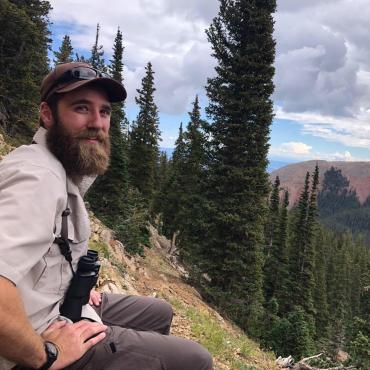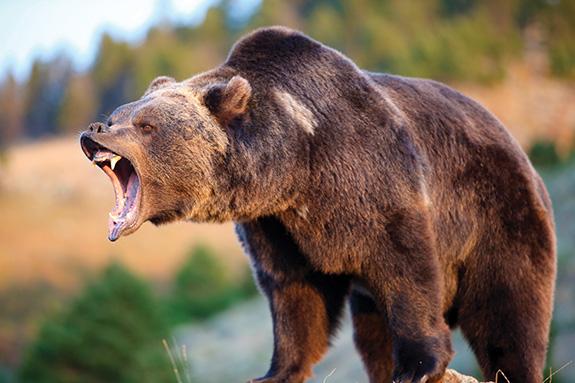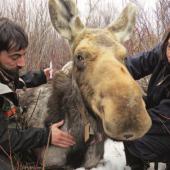Bearing Witness
Making sense of grizzly-bear encounters in southwest Montana.
One of the paradoxes of bear and human safety is that the practices associated with successful hunting inherently put hunters at a higher risk of encountering bears. It’s a cumulative effect of several factors: being outside in the fall months during the hours when bears are most active, being alone, moving quietly against the wind, and dealing with large animal carcasses that may take more than a day to process. However, only one of the seven fatal grizzly-bear attacks that have happened since 2010 in the Greater Yellowstone Ecosystem—which includes portions of Montana, Wyoming, and Idaho—was associated with hunting. Five of those seven involved other recreationists, and they occurred during the summer.
It’s a reminder that even though grizzly-bear attacks are statistically more likely to happen during the fall, such an encounter can happen to anyone, regardless of how or where they recreate in southwest Montana.
A Tale of Two Populations
Human encounters with grizzly bears have risen significantly in recent years. Since 1900, there have been 14 grizzly-related human deaths in the GYE. Half of those fatalities have occurred since 2010. Southwest Montana’s human landscape is changing. Census estimates indicate Gallatin County’s population has gained more than 13,000 people since 2010, surpassing a population of 100,000 in 2017. Tourism visitation is also on the rise.
Concurrently, grizzlies are becoming more numerous and widespread, with a conservatively estimated population north of 750 animals in the GYE. That population has expanded well beyond its designated recovery zone into northern reaches of the Gravelly, Madison, Gallatin, and Absaroka mountain ranges, as well as the valleys between them.
The result is unsurprising. Grizzlies and humans are seeing more of each other. 2017 was a peak year for encounters with grizzlies in southwest Montana. That year, 15 people reported having a close encounter with a grizzly, resulting in three nonfatal injuries to humans. The running five-year average is 12.4 encounters and 2.2 human injuries in Montana’s portion of the Yellowstone Ecosystem. Historically, most encounters resulting in human injury occur in September and October when bears are in an active state of hyperphagia in preparation for hibernation.
The Human Challenge
One of the biggest challenges in mitigating conflicts with grizzlies is their unpredictability. The only safe assumption is that an encounter could happen anywhere west of Billings between March and December. Grizzly-bear encounters occur in varied habitat types, from high-elevation rocky peaks, in heavy timber, along creeks and rivers, to open sagebrush grasslands. Their disposition also runs on a short fuse, making their behavior unpredictable at times, especially in surprise encounters with humans. Females with cubs can be extremely defensive in a surprise encounter. Most human injuries and fatalities are a result of encounters with female bears with cubs.
What can be predicted or controlled more easily is human behavior. Personal safety in bear country correlates with proactively being aware and prepared. And in a very meaningful way, many recreationists are getting the message. As I pass people on the trail, I usually catch a glimpse of an orange safety tab atop a can of bear spray clipped to a belt or backpack. More people are using bear-resistant products to store food and other scented attractants in the field. These and other behaviors seem to indicate people generally have bears in mind when they head into the woods.
Now it’s time to take our awareness and behavior to the next level. It’s not enough to have bear spray with you. Get used to carrying it where it can be deployed at a second’s notice. Practice taking the safety off and putting it back on. Test your bear spray in a safe location before heading out.
Try to think like a bear that’s irresistibly curious about what’s inside your cooler. Use an appropriately sized padlock or bolt to seal your cooler. Use it for food and all other scented attractants. When you’re at home, keep the trash in the garage until the morning of pickup day. Bring the bird feeders inside between March and December.
As a hunter, have the knowledge and equipment to deal with a game-animal carcass. Prolonged retrieval and removal of game greatly increases the chance of a bear finding the carcass and producing an encounter situation.
Whether you’re chasing waterfalls or elk, travel in groups. Casual noise is a good thing. Read trailhead signs. Look for evidence of bear activity, such as scat, tracks, carcasses, concentrations of ravens, digging areas, day beds, and rub trees. If you see a grizzly or signs of one, here’s something to think about as you (calmly) leave the area. Thirty years ago, such a sight was unheard of outside Yellowstone National Park. We’re fortunate to live with a recovered population back on the landscape. Now the greatest challenge going forward is a human one, where seemingly small but informed behaviors create a sustainable, balanced outcome for humans and grizzly bears.














